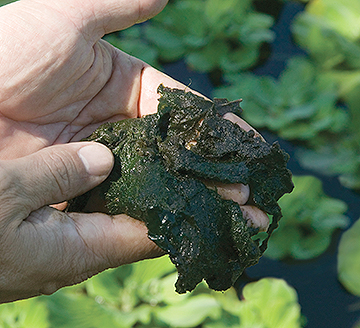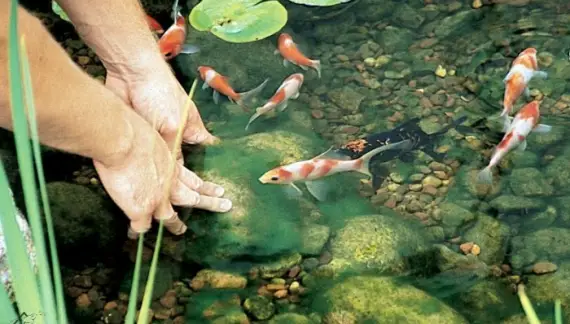Algae growth in ponds is a common issue that many pond owners face. Excessive algae can make your pond water look green, murky, and unattractive. It can also deplete oxygen levels, harm aquatic life, and create unpleasant odors. Fortunately, there are several effective ways to reduce algae in a pond. By following these tips, you can maintain a healthy and beautiful pond ecosystem.
1. Provide Sufficient Aeration
Proper aeration is essential for maintaining water quality and reducing algae growth in a pond. Installing aeration equipment, such as aerators or fountains, helps to increase oxygen levels in the water. Adequate oxygen levels support beneficial bacteria that compete with algae for nutrients, thereby inhibiting algae growth.
2. Limit Sunlight Exposure
Excessive sunlight can promote algae growth in ponds. To reduce sunlight exposure, consider adding aquatic plants around the pond’s perimeter. Plants like water lilies and water hyacinths provide shade and compete with algae for nutrients, helping to keep algae in check.

Credit: www.tetra-fish.com
3. Maintain Proper Nutrient Balance
Algae thrive on nutrients like phosphorus and nitrogen. To reduce algae growth, limit the amount of nutrients entering the pond. Avoid overfeeding fish, as uneaten food can decompose and release excess nutrients into the water. Additionally, use phosphate-free fertilizers on nearby lawns and gardens to prevent nutrient runoff into the pond.
4. Regularly Clean and Maintain the Pond
Regular maintenance is key to preventing algae buildup in a pond. Remove debris such as fallen leaves, twigs, and dead plants from the water regularly. These organic materials contribute to nutrient levels in the pond, fueling algae growth. Use a pond skimmer or net to keep the surface clear of debris.
5. Add Beneficial Bacteria
Beneficial bacteria help break down organic matter in the pond, reducing nutrient levels and inhibiting algae growth. Consider adding bacterial products specifically designed for ponds to help maintain water quality. These products help establish a healthy microbial balance in the water, promoting a clear and algae-free pond.
6. Use Barley Straw
Barley straw is a natural and effective way to control algae in ponds. When barley straw decomposes in water, it releases compounds that inhibit algae growth. Place barley straw bundles in mesh bags and float them in the pond to help prevent algae blooms. Replace the barley straw every few months for optimal results.

Credit: www.wikihow.com
7. Install a UV Clarifier
UV clarifiers are devices that use ultraviolet light to kill algae cells and prevent their growth. Installing a UV clarifier in your pond’s filtration system can help maintain water clarity and reduce algae blooms. Regularly clean and maintain the UV clarifier to ensure its effectiveness.
8. Control Fish Population
Excessive fish populations can contribute to nutrient levels in the pond, leading to increased algae growth. Monitor and control the number of fish in your pond to prevent overcrowding. Avoid overfeeding fish, as uneaten food can accumulate and contribute to nutrient imbalances.
9. Consider Using Algaecides
If algae growth becomes unmanageable, consider using algaecides as a last resort. Algaecides are chemical treatments that kill algae in ponds. However, use algaecides with caution, as they can harm beneficial plants and fish if not applied correctly. Follow the manufacturer’s instructions carefully when using algaecides.
10. Monitor Water Quality Regularly
Regularly test and monitor the water quality of your pond to ensure it remains balanced and healthy. Check for nutrient levels, pH, and oxygen levels to prevent imbalances that can lead to algae blooms. By maintaining proper water quality, you can reduce the likelihood of algae growth in your pond.
Conclusion
Reducing algae in a pond requires a combination of proper maintenance practices, nutrient control, and natural remedies. By implementing these strategies, you can create a healthy and balanced pond ecosystem that is free from excessive algae growth. Remember to regularly clean, aerate, and monitor your pond to ensure optimal water quality and a beautiful aquatic environment for plants and wildlife.


